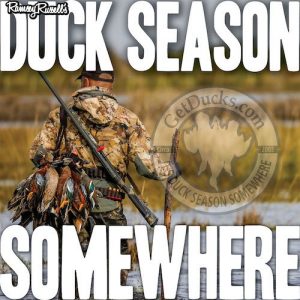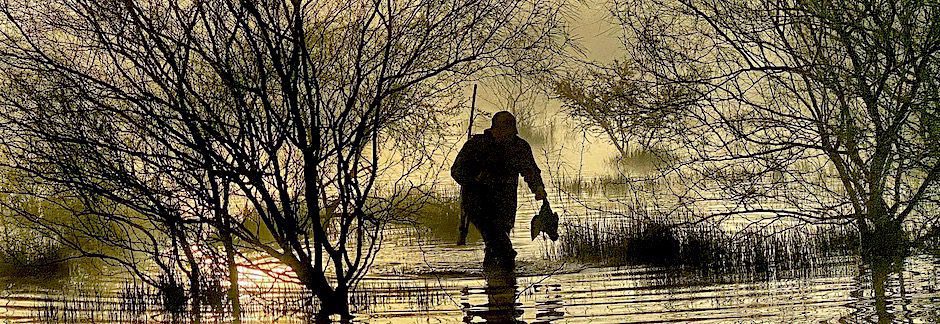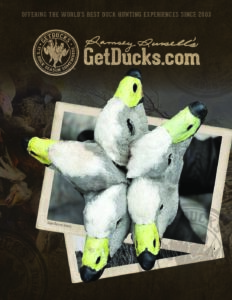MOJO’S Duck Season Somewhere Podcast
EP 577. Leveling Up with HuntProof App

What started as a simple idea in the blind has since exploded across the hunting scene to become HuntProof—a powerful tool helping hunters level up! HuntProof has turned the tables on handwritten hunting logs and field notes—no more writer’s cramp or scribbled notes, for starters. Retriever training, turkey hunting, AI tools, faster insights, seasonal retrieves, birds and species totals, photo archives, scouting reports–more features with each update—and all in the palm of your hand and for less than a cup of fancy coffee. HuntProof isn’t just an app, it’s a revolution for serious hunters. And print your season to a hardbound journal for posterity? Learn how to take your own waterfowl hunting next-level.
EP 576. Chicken Little: Debunking Waterfowl Management Myths (Part 2)

In this no-holds-barred, part 2-of-2 conversation, Dr. Michael Schummer challenges dangerous misinformation circulating throughout our waterfowling community. From social media myths to conspiracy-fueled rhetoric directed towards waterfowl population modeling science, Schummer builds on FowlWeather Podcast Ep 74. Burning it All Down, calling for a return to truth, critical thinking, and trust in data that has undoubtably produced the most enviably successful waterfowl conservation model on earth. It’s time to confront the noise, rethink old habits, and build a future rooted in waterfowl conservation facts–not fiction.
Related Link:
*SPECIAL* Flying Blind: Waterfowl Science & Management at Risk

Today’s special topic cuts deeper than science or partisan politics—it defends North American duck hunting’s essential back bone, wetland health and abundance, continued public land access, and our legacy to future duck hunting generations. Right now, powerful forces are dismantling the foundations of North America’s greatest success story–waterfowl hunting as you’ve known it your entire life. Most have scarcely even noticed. Decades of data and research, the programs and staff that keep ducks overhead and seasons open–all are all on the chopping block. If you’ve ever watched sunrise from the duck blind, heard thundering wings overhead, or taught your children the meaning of this cherished tradition–this fight belongs to you. Me. All waterfowlers. Silence is complicity. Read the links below. And act now. This is your chance to make a real difference. If not you, who?
———-
ACT NOW–
Call your representatives at links below. Mention the specific issue–lack of federal oversight/data on migratory bird populations or concerns about critical habitat protection. Tell them you’re a hunter and appreciate their support.
Congressional Directory Tool (U.S. House and Senate)
———-
DOGE Cuts Threaten USFWS Annual Waterfowl Surveys (Field & Stream)
Report: Wildlife Refuge System ‘at risk’ with no units fully resourced amid DOGE uncertainty
Interior Secretary Doug Bergum abdicates, formally hands over power to DOGE
Trump Administration swings budget axe at USGS biology research
EP 575. Catching Spring SLABS!

Get the grease HOT! We’re walking through waist-deep river water in waders today, boys and girls, but the air is heavy with pollen, the weather’s beautiful, spawning slabs are transitioning to shallow water–and the bite is underway! Near a fabled Mississippi lake that consistently produces some the largest slab crappie in America, I join John “Little Riddle” Blake, Jimmy “The Mayor” Dean, and John Harrison for stories and insights collectively representing well more than a century fishing these legendary waters. Ain’t kidding about hot grease, either–we eating good tonight!
EP 574. Chicken Little: Debunking Waterfowl Management Myths (Part 1)

In this no-holds-barred, part 1-of-2 conversation, Dr. Michael Schummer challenges dangerous misinformation circulating throughout our waterfowling community. From social media myths to conspiracy-fueled rhetoric directed towards waterfowl population modeling science, Schummer builds on FowlWeather Podcast Ep 74. Burning it All Down, calling for a return to truth, critical thinking, and trust in data that has undoubtably produced the most enviably successful waterfowl conservation model on earth. It’s time to confront the noise, rethink old habits, and build a future rooted in waterfowl conservation facts–not fiction.
Related Link:
EP 573. Making the Most of Mazatlan

This past year was drier in Mazatlan, Mexico than it’s been since 1964! Needless to say that with less water on the landscape there were fewer ducks. Given advanced notice, most guests came anyway and even had a great time. Because it’s a total-experience adventure. While seasons come and go, today’s guest made the absolute most of their Mazatlan duck hunting vacation, bringing home both bucket-list species and memories for a lifetime. Better believe that I was sure taking notes for future visits!
EP 572. Sparkleberry Swamp Legend (Part 2)

Our colorful journey into Sparkleberry Swamp’s remote reaches continues as 79-year-old Toy McCord reflects on how Sparkleberry—and duck hunting there—have changed over the decades. He discusses shifting migration patterns, evolving hunting ethics, and the growing pressures on swamp ecosystems. As a lifelong hunter, guide, and witness to the swamp’s transformation, Toy offers hard truths, old-school wisdom, and thoughtful considerations for future generations of Sparkelberry stewards and storytellers. Good stuff.
EP 571. Straight Shooting for Hunters

Outdoor legends Will Primos and Anthony Matarese Jr. break down the habits, mindset, and gear choices that separate good shooters from great ones. From mastering fundamentals to understanding ethical shot selection, their practical, no-nonsense advice that will help you become a more confident and capable shotgunner in the field. Biggest misconcenptions in shotgunning, most common mistakes, world-class shooting habits, practical tips, dominant eye, proper mount, lead distances, and more–we cover it all! Whether new to hunting or refining your craft, everyone will appreciate this lively discussion. Boom!
Related Links:
Straight Shooting for Hunters: A Champion’s Guide to Using Shotguns in the Field
EP 570. Sparkleberry Swamp Legend (Part 1)

Seventy-nine-year-old Mr. Toy McCord takes us deep into the heart of Sparkleberry Swamp—where he was raised, mentored, and shaped by wild water and duck hunting tradition. He shares vivid memories from his earliest days–like the time a 5-year-old Toy, his brothers and Dad were stranded in the swamp for days–the people who taught him the swamp’s secrets, and how his duck hunting passion became a way of life. With unforgettable stories, close calls, and reflections on a changing landscape, Mr. Toy gives voice to a magical place and time that few truly know.
EP 569. Flying V

Been a real long time since catching up with buddies Brady Davis and Matt McCormick (Ep 76. Of Hippies and Cowboys, Bozeman, MT), but they’ve been busy since then–that’s for danged sure! Like an Alberta clipper sweeping across open range, we race through a lot of fun topics—swapping 10-gauge for 28-gauge shotguns, running Chesapeake Bay retrievers in Montana, forming their Flying V companies, developing habitat, managing hunting pressure, collaborating with MeatEater, and their thoughts on ensuring that brand partnerships stay authentic. Never a dull moment with these boys!
Related Links:
www.FlyingV.us








